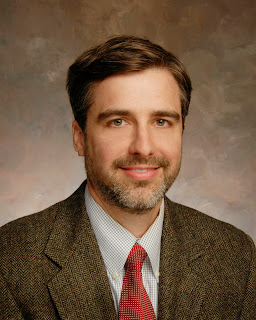
By: Dr. Tom Harris
Dr. Harris practices pediatric pulmonology at Children’s of Alabama, where he serves as medical director of the aerodigestive and pediatric bronchoscopy programs. In addition to his clinical work, he researches disease mechanisms in cystic fibrosis, and is an Assistant Professor at the University of Alabama at Birmingham.
With enthusiasm, I wanted to write about the Children’s of Alabama Aerodigestive Program, one of only a few nationwide. We developed this program to comprehensively (and efficiently) evaluate and manage the medical needs of children with complex airway and nutritional problems. The program coordinates pulmonology, ENT and gastroenterology subspecialties, along with other pediatric caregivers.
We created the program with the desire to avoid the fragmented care that often frustrates both patients and physicians. Patients come from a wide referral base (Tennessee, Florida, Mississippi, Georgia and throughout Alabama), often with complicated medical conditions or recurrent airway/feeding symptoms that have not been adequately addressed. We find that families (and referring physicians) are attracted to the idea of receiving coordinated subspecialty care.
The key to the program’s success is our collaborative environment. Team members include:
· Dr. Brian Wiatrak, director of pediatric otolaryngology (ENT), who has provided a wealth of experience in airway management, as well as key support for the concept and creation of the program.
· Dr. Nicholas Smith, a pediatric ENT physician, recently recruited to Birmingham from Cincinnati Children’s Hospital, site of the nation’s first aerodigestive program, to add leading edge expertise in airway surgery.
· Dr. Brian Kulbersh, a pediatric ENT, providing expertise in laryngeal cleft pathology and repair. ·
. Dr. Reed Dimmitt, director of Pediatric Gastroenterology, with expertise in eosinophilic esophagitis clinic, gastroesophageal reflux disease, and a passion about feeding intervention and nutritional support.
· Beth Crawford, MSC,CCC - SLP; a speech-language pathologist, who provides evaluation and treatment of speech, language and swallowing dysfunction. She is certified in VitalStim neuromuscular electrical stimulation, and offers the full range of evaluation and treatment for swallowing disorders.
Another key member of the team is Ashley Chapman, RN, our aerodigestive coordinator. She puts families at ease, sets up coordinated appointments and ensures important follow-ups. We attempt to coordinate doctor appointments and patient evaluations all in one day.
In addition, Children’s will soon open one of the nation’s few intensive feeding programs. The program is developed and directed by a clinical psychologist—Dr. Michelle Mastin who headed a similar program in Michigan. Dr. Mastin’s comprehensive team includes the trans-disciplinary care of speech and language pathology, occupational therapy, clinical nutrition, social work, psychology and medicine. These experts work on changing the learned barriers children sometimes face with feeding. For example, even after the anatomical reasons for swallow dysfunction have corrected, comprehensive trans-disciplinary behavior modification may be necessary to overcome aversions and relearn how to eat.
To date, the aerodigestive program has served nearly 200 patients from our referral base. Most rewardingly, many referrals come “word of mouth” from families who have been well-served by our program and then, in turn, refer their friends.
A brief overview of some common medical conditions we treat includes:
· Croup
· Tracheostomy
· Subglottic stenosis
· Feeding aversion
· Aspiration related lung disease
· Noisy breathing
· Obstructive sleep apnea
· Vocal cord dysfunction
· Swallowing dysfunction
· Tracheomalacia
· Laryngomalacia
· Tracheoesophageal fistula
· Esophageal atresia
· Gastroesophageal reflux
· Eosinophilic esophagitis
· Dysphagia
As part of our evaluation, patients are sometimes referred
for a joint endoscopy, which includes direct laryngoscopy bronchoscopy,
flexible bronchoscopy and esophagogastroduedenoscopy (EGD). That procedure is
performed under the same anesthesia to further coordinate care and limit
unnecessary risk.
Sometimes surgery is required. Sometimes a patient needs
medical management. Sometimes it’s rehabilitation. And other times, the child
may just need to outgrow the condition. This coordinated care helps take away
uncertainty, and allows us to confidently care for children.
All this has been personally and professionally rewarding
for all of us. We are improving care for some of our most fragile children, and
as a byproduct, our medical specialists are learning much from one another. A
combined clinic is held the first and third Friday of the month to ascertain
medical needs, and Ashley Chapman, our coordinator, walks the family through
this process. Our team meets the first and third Wednesday of the month to
discuss patients and develop personalized care plans, with airway and GI
evaluations typically occurring that same day.
For more information about our services, visit our website
at www.childrensal.org/aerodigestive








+(1).jpg)